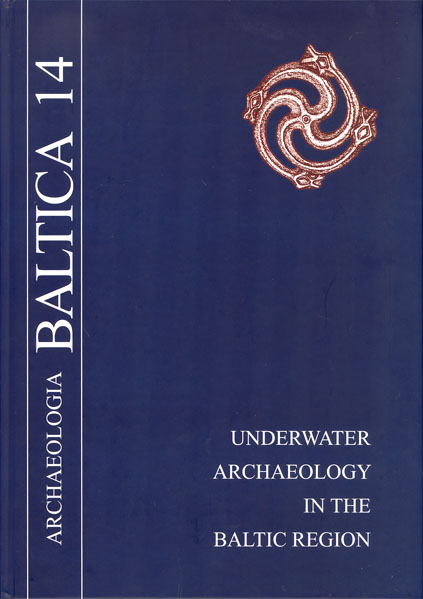Volume 14 (2010): Underwater Archaeology in the Baltic Region, December 2010

Order by:
Pub. online: 20 Dec 2010
Type: Article
 Open Access
Open Access
Journal:
Archaeologia Baltica
Volume 14 (2010): Underwater Archaeology in the Baltic Region, pp. 120–135
Abstract
Pub. online: 20 Dec 2010
Type: Article
 Open Access
Open Access
Journal:
Archaeologia Baltica
Volume 14 (2010): Underwater Archaeology in the Baltic Region, pp. 136–165
Abstract
Pub. online: 20 Dec 2010
Type: Article
 Open Access
Open Access
Journal:
Archaeologia Baltica
Volume 14 (2010): Underwater Archaeology in the Baltic Region, pp. 168–182
Abstract
Pub. online: 20 Dec 2010
Type: Article
 Open Access
Open Access
Journal:
Archaeologia Baltica
Volume 14 (2010): Underwater Archaeology in the Baltic Region, pp. 183–195
Abstract
Pub. online: 20 Dec 2010
Type: Article
 Open Access
Open Access
Journal:
Archaeologia Baltica
Volume 14 (2010): Underwater Archaeology in the Baltic Region, pp. 196–204
Abstract
Pub. online: 20 Dec 2010
Type: Article
 Open Access
Open Access
Journal:
Archaeologia Baltica
Volume 14 (2010): Underwater Archaeology in the Baltic Region, pp. 205–2013
Abstract
Pub. online: 20 Dec 2010
Type: Article
 Open Access
Open Access
Journal:
Archaeologia Baltica
Volume 14 (2010): Underwater Archaeology in the Baltic Region, pp. 216–218
Pub. online: 20 Dec 2010
Type: Article
 Open Access
Open Access
Journal:
Archaeologia Baltica
Volume 14 (2010): Underwater Archaeology in the Baltic Region, pp. 219–225
Abstract
Pub. online: 20 Dec 2010
Type: Article
 Open Access
Open Access
Journal:
Archaeologia Baltica
Volume 14 (2010): Underwater Archaeology in the Baltic Region, pp. 228–233
Abstract
Pub. online: 20 Dec 2010
Type: Article
 Open Access
Open Access
Journal:
Archaeologia Baltica
Volume 14 (2010): Underwater Archaeology in the Baltic Region, pp. 234–240
Abstract